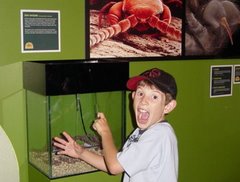Went to this great session today organised for clients by market research consultants Heartbeat Trends and Vivid. The session was looking at trends based on both quantitative and qualitative research. Here are my notes.
Heartbeat Trends What's Next Study:
- Gen X and Gen Y are different – can't speak to them all the same
- Kidfluence: Gen X often lumped together but in reality are very different, by 2011 most couples will not have children
- Better to divide those with kids and those without – as are vastly different, cannot target both using the same strategy
- Glass wall dividing work and family will break as employers need to recognise that their male workers are active fathers
- Division between work and family life is striking fatheres and they are starting to think more like mothers in regards to kids, esp. when at work
- Little Emperors: people say they want big families, but what they want to provide means they really can only have one child and therefore this new generatioon will be even more spoiled. Single child families are on the rise, these kids will be a more driven, confident and empowered generation than today's kids. Current Gen Y will be nothing compared to little emperors! I want it and I want it now
- Future of health: discontent with healthcare system, expectation that they will be treated straight away – no waiting
- Future food: a lot more people are growing their own food in order to feel connected to the earth, accessible gardens will be on the rise, local green grocers – people are really thinking about where food comes from and where food does not come from
- Green is good: everyone doing something and all have inconsistencies in their behaviour, the water issue has galvanised Australians, parents are the most passionate of all and want to instil in their kids responsible behaviour and understanding
- Most people are doing something, e.g. 66% of Victorian households are composting and vast majority of Australians are recycling, people can name what they're doing, however are they really? The next study will look at actual behaviour
Heartbeat Trends Gen Y Living Needs Study:
- Live in a very secular society
- Affiliation beyond inner circle – adults (Boomers etc) fear that language is being lost and the way Gen Y communicates is not real communication. For Gen Y it's about true communication in different forms. Need to remember that language has always and is always changing and will continue to do so
- E-filliation: Gen Y have affiliation 24/7 and is borderless, are emotionally powerful relationships, less guarded and more open in communication as won't see them face-to-face so feel comfortable doing this. Works in active and passive ways, in passive way remind Gen y that they are affiliated, confirmation that someone cares even if just a text message notification. It is quantity not quality that counts
- Easy friendships, online connections
- Questing (philanthropy) behaviour, armchair activism, support social issues
- Status: influence of American culture, look at change in the TV show 90201 – when it was on 10 (??) years ago it was an aspirational show, now it seems we can all live like that now; Gen Y a conspicuous generation, a move away from Australians egalitarian value – more hedonistic
- Release: an antidote, explosive release –vent frustrations and lose control. The "Soprano Syndrome" – kind of cool with a great lifestyle. They can be quite violnet
- What are their media choices?? Are pushing the boundaries to extremes. They love programs that push buttons on social sensitivities (Family Guy, South Park are examples of this)
- Constantly change and they are are masters of change
Heartbeat Trends New Women Clutterbuster Study:
- What is cutting through all the advertising for women?
- Let your guard down: women are sceptical about claims and very savvy and don't take it as face value. They love catalogues, therefore should be more magazine-like, women find them a compelling medium and soemthing they take ythe tim to read, are doing these behaviours online at Lasoo.com where you can search and compare catalogues, they want to beat retailers at their own game
- Engage in permission marketing: Brand Power® style is what they want
- News sells – if you have genuine news they will listen, cut to the chase (don't like Zoot Review® ads for example as not "authentic")
- Advice from a friend – word of mouth is a powerful influence on women, they now regard Sally from Brand Power® as dependable advice, not pushing and likeable, friendly, approachable (Lesson: choose a celebrity this way – someone that people feel if you run across them in the street they'll stop for a chat. They like nice people)
- Drop their guard when they are not the obvious target for the ad
- Love seeing active and involved men in advertising
- Family time: let go and make us laugh, ads should show us having fun as families and being together
- Family life is seldom perfect and should be shown as such in ads, women like to see "aspirational reality", need to show the mess, like to see stuff-ups and imperfections. The IKEA and Cottee's cordial ads were cited as good examples of this
- Inclusivity: single parents are the biggest minority in Australia and they turn off when seeing the "perfect family" in ads as it's not them
- Moral compass: they have strong moral values. However, don't want TV junk food ads banned as they see managing that issue as their role as mothers, the one area they did want looked at was over-sexualisation of children and body image
And that's when I had to leave – fantastic session guys!



